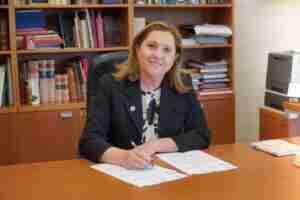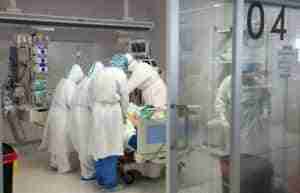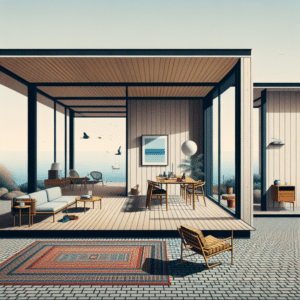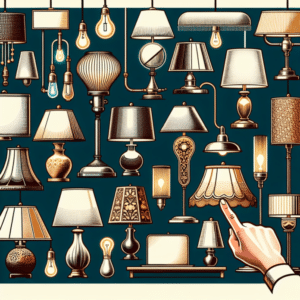Asturians spend 10% of their salary on paying for the energy they consume in their homes, according to an analysis by the Asturian company SotySolar, which has taken into consideration their Renewable Energy 2022 study and data from the INE. However, the possibilities of reducing this expenditure are very high considering the energy alternatives available. In fact, the Principality has greater potential for self-consumption than leading solar energy countries such as Germany or the United Kingdom.
Asturias has 218 sunny days a year to produce energy under the best conditions. Additionally, it benefits from a legal framework that encourages self-consumption and reduces the prices of photovoltaic installations. Homes with solar energy installations in Asturias enjoy up to 70% savings on their bills.
«Renewable energies such as photovoltaics are a revolution in a region where the rural world represents up to 80% of its territory. Not only is it an opportunity to save up to 70% on the bill, but also to increase the value of homes and promote sustainable and independent development in rural areas,» highlights Edgar Imaz, co-CEO and co-founder of SotySolar.
Is it profitable to install solar panels in Asturias? With an oceanic climate characterized by abundant rainfall throughout the year, mild temperatures, cloudiness, and humidity, it may seem that solar energy is not profitable in Asturias. However, that is not the case.
«With temperatures ranging from 7° to 21° and around 1,900 hours of sunshine, which is equivalent to 218 days when the installation will be producing under the best conditions, it generates 1,200 kWh/m². This corresponds to an annual production of over 3,000 kWh. Contrary to what may seem, it is not necessary for the sun to be shining brightly to install solar panels,» says Edgar Imaz, co-CEO and co-founder of SotySolar.
«Furthermore, thanks to the installation of batteries like the Tesla Powerwall – of which SotySolar is a certified installer – during the day, when solar energy generation is high, the panels can charge the Powerwall, allowing the electricity to be stored for use during periods of lower generation or at night. This translates into significant savings in the cost of the electricity bill. Thanks to its two-way communication capability, Powerwall can automatically adjust the flow of energy based on the needs of the home and weather conditions,» explains Edgar Imaz, co-CEO and co-founder of SotySolar.
In fact, SotySolar’s experts point out that the number of installations in Asturias has doubled in just one year.
As for rain, the reality is that rainwater helps clean the dirt accumulated on the panels, helping them to remain in optimal conditions. And if accompanied by storms, they reduce the temperature of the panels and maximize their profitability. In fact, the optimal weather conditions for the maximum efficiency of the panels are temperatures below 25°, generating the highest power peaks, even on partially cloudy days.
Unawareness and prejudices: the main barrier to solar energy in Asturias
According to SotySolar’s Renewable Energy 2022 study, almost 92% of Asturians consume traditional electricity in their homes, and 77% believe that they currently pay too much for it. The reality is that there are alternatives, but 36% of Asturians don’t know if they can install them in their homes, and 46% are unsure if they are more expensive than traditional energy sources.
Nevertheless, 8 out of 10 respondents stated that they would like to use green energy in their homes. The main barriers preventing them from making the switch were the initial investment (30%), lack of knowledge (27%), and uncertainty whether it can be installed in their homes (25%).
In addition, the surveyed Asturians are calling for more payment facilities (67%) and public information (43%) to make the transition. With the goal of resolving all doubts regarding the installation of solar panels and helping Asturians achieve energy independence, the Asturian company specialized in photovoltaic energy for self-consumption, SotySolar, will be present at the 66th edition of the International Trade Fair of Asturias from August 5th to 20th.
Subsidies and ICIO and IBI discounts for installing solar energy in Asturias
Since last year, the call for European Next Generation EU subsidies for self-consumption installations has been open. There is a budget of over 14 million euros for the implementation of self-consumption, storage, and thermal uses of renewable energy in the Principality. These subsidies will be available until the end of 2023, if they are not exhausted before then.
Furthermore, many Asturian municipalities offer IBI discounts to promote the transition towards a greener energy model. The IBI discount is determined by each municipality and varies between different municipalities. Depending on each municipality, a discount of up to 95% on the Tax on Construction, Installations, and Works (ICIO) can be obtained in municipalities with more than 10,000 inhabitants, such as Gijón or Mieres.
Oviedo
The city of Oviedo offers a 50% IBI discount for 5 years on residential properties. To enjoy the discount, the electricity supply must represent a minimum of 40% of the total energy consumption of the property, with a minimum installed peak power of 3.5 kWp in single-family homes. The installation in multi-family buildings must equal or exceed 300 Wp of peak electrical power for each of the homes or commercial premises in the building.
Gijón
The IBI discount in Gijón is 50% for residential properties and is applied for the 5 years following the installation. To be eligible for this discount, the installation must have an available installed power of at least 2.5 kW per 200 m² of constructed area.
Avilés
Avilés offers a 50% IBI discount for 3 years on residential properties. The minimum contracted power must be 5 kW per 100 m² of constructed area.
Real example of solar panel installation in Asturias
In a typical home with an average monthly bill of 150 euros, installing 10 panels and an inverter would achieve a production of 4,602 kWh, covering almost the entire monthly electricity consumption. The installation cost would be 6,867 euros, with a payback period of under 6 years. If a 40% discount is obtained from available subsidies, the installation cost would decrease to 4,120 euros. The price decrease means that the payback period is reduced to 3.21 years.
With this type of installation without batteries, it is possible to save 1,259 euros per year, which translates to 34,655 euros over 25 years. In terms of the electricity bill, this would mean a 70% savings.
















